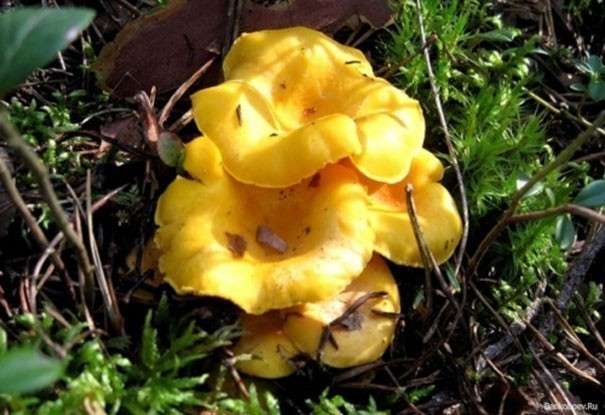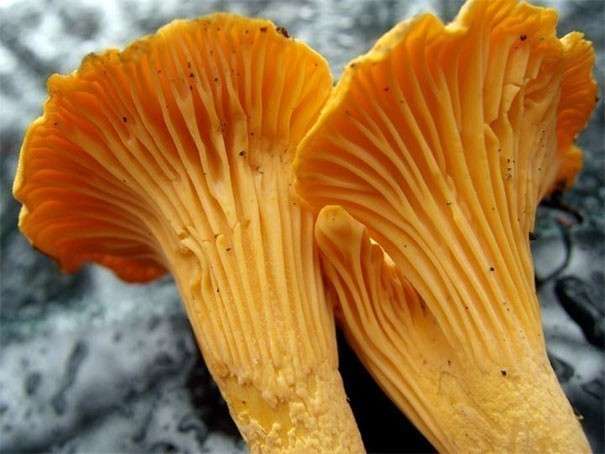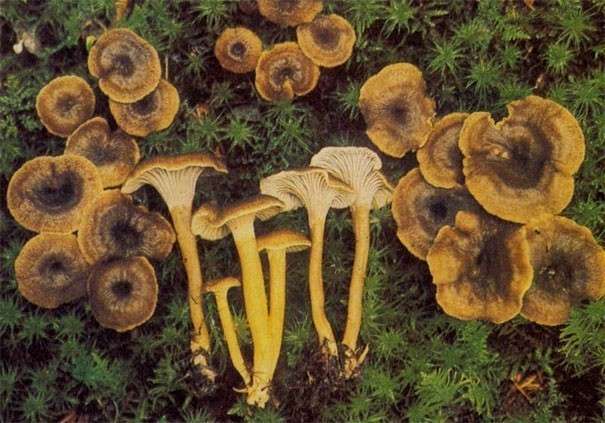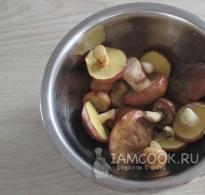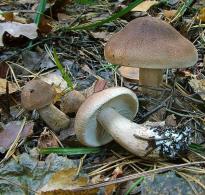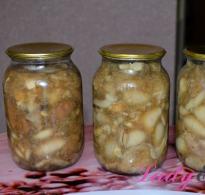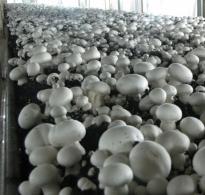What do chanterelle mushrooms look like, where do they grow and how are they useful?
The mushroom "chanterelle" got its name due to the yellow-red color. Even in ancient times, this mushroom was familiar to our ancestors. In Old Russian, the word “fox” meant “yellow”, hence the name of both the mushroom and the well-known cunning animal that has the same coat color.
In our latitudes, the common chanterelle is the most common, which resembles an irregularly shaped concave funnel in appearance, however, you can often find a chanterelle with a flat or convex hat.
As a rule, chanterelles are small in size: the diameter of the cap is no more than 14 cm, and the height of the stem is about 10 cm. And yet, you must definitely see how the chanterelle mushrooms look in the photo in order to understand what kind of crop you should bring home from the forest.
What do chanterelle mushrooms look like?
There are several varieties of edible chanterelle, however, they all have one feature in common: in mushrooms of the chanterelle family, as a rule, the stem and cap do not have clear dividing boundaries between themselves, and the mushroom resembles an irregular cylinder in shape. The color scheme can range from light yellow to deep orange. Chanterelles have a fleshy and dense pulp, characterized by a specific spicy smell. Young mushrooms are distinguished by convex caps, which become flat as they ripen, and funnel-shaped when fully ripe.
It is important for every mushroom picker to know what chanterelle mushrooms look like, because in the forest you can often see other chanterelle-like mushrooms, which you should not take into your basket.
Where do chanterelle mushrooms grow?
Mushroom pickers open the “hunting” season for chanterelles at the end of summer. These mushrooms love open glades where chanterelle mushrooms grow in moss or grass, usually in large groups. They are valued for their dense and elastic structure, which does not allow breaking during collection and transportation. In addition, the chanterelle does not require special weather conditions, so mushroom pickers have the opportunity to find them juicy even in the hottest summer periods.
Many novice mushroom pickers do not know in which forests chanterelle mushrooms grow. Since they prefer acidic soils, they should be looked for in coniferous or mixed forests dominated by spruce, pine, oak, beech, and sometimes birch.
Inexperienced mushroom lovers should know that if they find one chanterelle, then they should take a good look around, as these mushrooms usually grow in groups, sometimes quite large. Often, having found such a mushroom place, you can fill all the available baskets in just a few minutes.
Video about what chanterelle mushrooms look like
It is not recommended to collect old mushrooms, even if they have a good appearance, since the process of protein decomposition has already begun in them, and when they are eaten, irreparable harm to health is possible.
But you should not leave the old mushroom in place either. If each mushroom picker is not too lazy to carefully prick it on a tree branch, then, over time, his spores will scatter across the clearing and next year the number of mushrooms in this clearing will please someone very much.
You should also be aware that mushrooms that grow near highways and railways tend to absorb, like a sponge, heavy metals and radioactive elements, which, of course, cannot be good for health.
Varieties of chanterelle mushrooms
There are more than 60 species of the chanterelle family, however, edible mushrooms in this family are far from all. Despite this fact, there are still no poisonous chanterelles. It should be noted that there is such a type of fungus as a false chanterelle, but it is not related to the real chanterelle. There is the following variety of chanterelle mushrooms:
- Deli.
- Edible.
- Conditionally edible.
Delicacies include:
- The fox is yellow.
- Chanterelle ordinary.
- Funnel fox.
yellow fox
The cap diameter is 2-6 cm, it is funnel-shaped and bright yellow in color, the edges of the cap are slightly wrapped, pinnate, the lower part is yellow. Young yellow chanterelles almost always have a smooth hat. Leg - rich yellow, thin. You can find such a mushroom in late autumn in a humid coniferous mountain forest. Prefers soils rich in lime.
Chanterelle ordinary
It has a fleshy, smooth cap of orange-yellow, and sometimes light yellow, 4-6 cm in diameter. The leg has a smooth surface of the same color as the cap. Leg length - 4-7 cm, narrowed down. The mushroom is harvested from June to late autumn, often growing in huge groups.
Chanterelle funnel
Such a mushroom has a funnel-shaped hat with a diameter of 2-6 cm and is colored brown-yellow. The funnel fox has a long, full yellow leg. It grows in the southern parts of the country. The mushroom has a rather sharp color transition between the stem and the cap. It is characterized by constant, stable yields.
Experienced “silent hunting” lovers know perfectly well where to pick chanterelle mushrooms, and beginners are advised to go for mushrooms at first with those who can always give the right advice.
Chanterelle mushrooms: benefits and harms
These mushrooms are widely used in cooking due to their excellent taste. Since the chanterelle is beautiful in almost any form, many lovers, knowing how chanterelle mushrooms are useful, try to prepare them for the future for the whole winter, so that later they can enjoy their excellent taste, and also use them in the treatment of diseases.
Dried chanterelle becomes hard and resembles rubber, so it is recommended to harvest it in freezers.
In addition to the fact that these mushrooms are very tasty in any form, they contain many vitamins and minerals, as well as useful substances, due to which traditional medicine actively uses chanterelle mushrooms to treat certain diseases. The benefits and harms of these mushrooms are rather ambiguous concepts due to the fact that there are radically opposite opinions of specialists and nutritionists regarding them.
Video about where to pick chanterelle mushrooms
Harm of chanterelle mushrooms
Despite the listed positive characteristics of this fungus, chanterelles in some cases are harmful to health.
- Due to the fact that mushrooms are products that are quite difficult to digest, their use is strictly contraindicated for people suffering from acute pancreatitis.
- You can not use chanterelles for intestinal diseases and gastritis.
- Due to the possibility of allergic reactions, chanterelles are not recommended for children.
- Chanterelles should not be consumed by pregnant and lactating mothers.
Do you like picking chanterelle mushrooms? In what forests and how often do you find these mushrooms? Tell about it in

